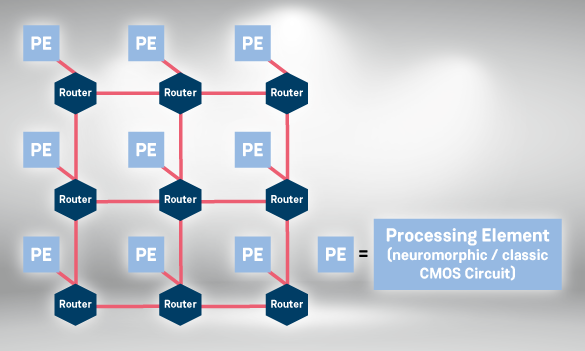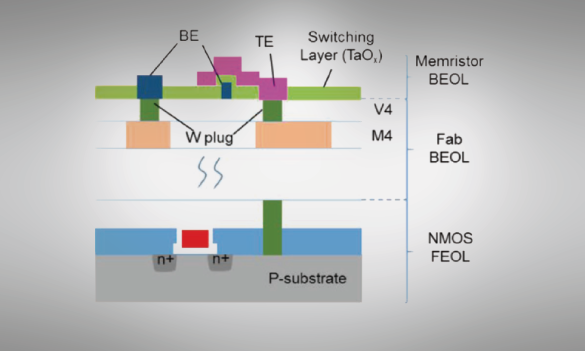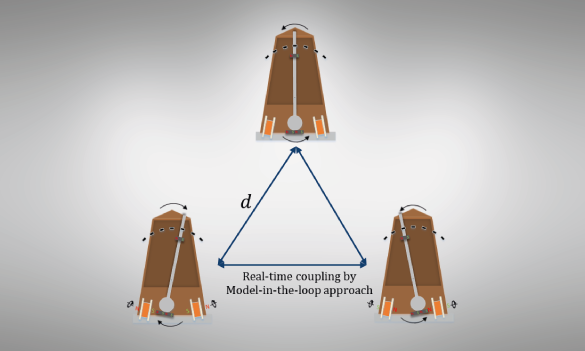Objective
We work on bio-inspired, post-van-Neumann computing paradigms. We utilize computing paradigms of the brain to exploit energy efficiency and inspire novel computing implementations,starting from physical-mathematical principles to the implementation level of prototype systems (e.g. based on FPGAs) or specially designed integrated circuits. These developments include CMOS solutions, system implementation and co – integration of emerging devices like memristive materials into neuromorphic computing (NC) architectures for edge computing. With this, we aim to enable benchmarking of full systems for various use cases.
Group Coordinators
Sabitha KusumaScientific CoordinatorBuilding 02.5 / Room E1+49 2461/61-96750 Neuromorphic Edge Computing Systems
As the core research topic of the Neuromorphic Computing group in ICA, we research and develop CMOS-based systems that employ bio-inspired computing paradigms. A focus is laid on the solution's scalability that leverages the maximum potential of emerging devices and novel algorithms, especially for edge computing applications where power consumption, compactness, and costs are typical constraints. Hence, integrated circuits are at the core of these developments.
AI for Imaging
AI4Imaging aims at enhancing the whole data acquisition and data processing chain for energy-efficient, ultra-fast spatio-temporal tomographic brain imaging and analysis at different scales. New concepts and future research will be focussed on artificial & bio-inspired neural networks and their combination with other methods.
Bio-Inspired Networks and Systems
In biology, parallel information processing is enabled by sparse communication over a tremendous number of connections. One challenge in the simulation of neuroscientific models is therefore the transport of spike information - ideally (faster than) in real-time. Additionally, such models are not homogeneous, so that the way in which neurons are mapped to computational units matters. To examine these aspects, we have developed therefore network simulators at different abstraction levels.
Interconnecting Spiking Neural Networks
The human brain consists of multiple interconnected regions (such as the motor area, visual area and auditory area of the neocortex, etc.), each responsible for different cognitive and physiological functions. When mapped onto Spiking Neural Networks (SNNs), these regions can be represented as clusters of specialized networks communicating through spikes.
Neuromorphic-Based Signal Processing
Modern sensors and detectors provide a high density of channels with resulting large data rates. Offline processing is not feasible due to limited data bandwidth and power consumption for the transport, hence an online classification needs to be done as early as possible. We investigate how neuromorphic methods can assist in here and enable novel edge computing systems based on FPGAs and custom integrated circuits.
Scalable Dynamic Computing Hardware
Large-scale optimization problems and simulation of large networks involve finding the best solution among a vast number of possibilities. Such problems stem from various use cases in logistics, finance, operations research, power grid load optimization and so on.
Our work is challenging, interdisciplinary, yet very rewarding. It is clear that this can only be achieved within a good team. Especially the inputs of doctoral researchers and students are valued, so we are continuously looking for new excellent candidates.
PhD Topics
Based on our research interests, we advertise specific PhD topics at Current Vacancies, but are also very interested to see your application besides that. Please detail your motivation in your application and your fit with us.
Bachelor and Master Theses Topics
We are happy to offer interested and motivated Bachelor and Master students topics for their theses at our institute in the field of Neuromorphic Computing with analog and digital integrated circuit design, algorithm development, electronics modeling, electronic system design, and connected topics.
In some cases, specific topics are advertised under Current Vacancies, but please reach out anyway if you are interested but no fitting topic is advertised. We can see together what could fit you. Please be aware that you will still need the support of a local professor for an external Master thesis.
Internships
Some majors require mandatory internships, especially the engineering majors. Even though we are not a commercial company, some of our work is comparable to the electrical engineering tasks at companies. Hence, we can also offer (mandatory) internships in our groups, but it will always be a case-by-case decision if this is possible and accepted by the university. If you are interested, feel free to contact us and we will check together with you what is possible.
Meet the Team
Daniel KeßelResearcherBuilding 02.5 / Room 127+49 2461/61-96537 Sabitha KusumaScientific CoordinatorBuilding 02.5 / Room E1+49 2461/61-96750 Fabian SchätzleDoctoral ResearcherBuilding 02.5 / Room 200F+49 2461/61-8016 Sergey SuslovResearcherBuilding 02.5 / Room R 244+49 2461/61-2335 


























